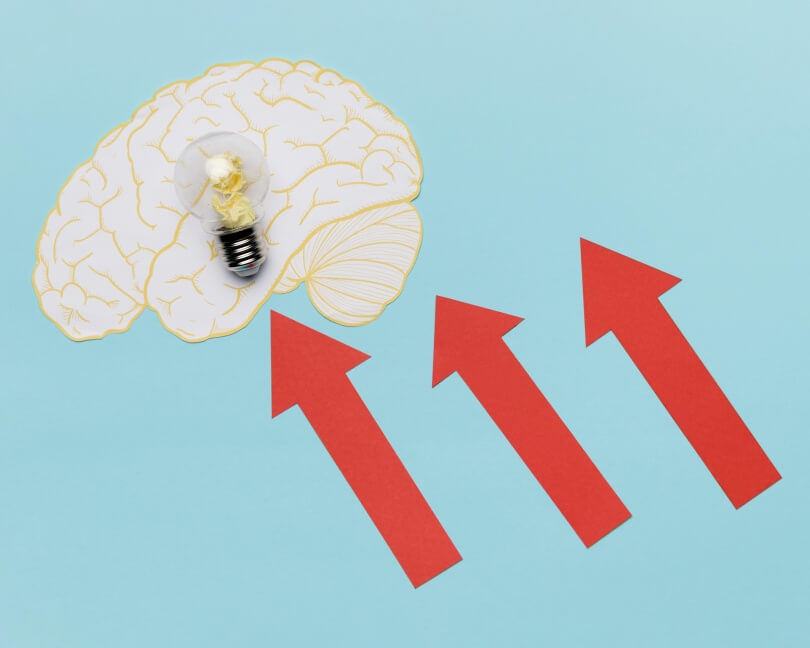Table of Contents
The Landscape of the Subconscious Mind

The Framework of Subconscious Processing
The human mind is a fascinating and intricate landscape where the mysterious and powerful subconscious brain orchestrates habit formation neuroscience. Delving into the neuroscience of habits reveals a compelling world where our brain and habits are intimately intertwined, governed by subconscious habit mechanisms that operate beneath our conscious awareness.
The Subconscious Brain: An Undercover Agent
Our subconscious mind is constantly at work, handling tasks beyond our immediate perception. It’s the unseen force shaping our behaviors and forming new habits without requiring active thought. Consider the process of learning to drive; initially, every action requires intense focus, but over time, the act of driving becomes almost automatic. This change is a masterpiece of the subconscious brain, which has taken over through repetitive practice, enabling our conscious mind to engage in other activities like conversation or listening to music.
- The brain’s neural pathways strengthen with each repetition, making actions more automatic and less energy-consuming.
- Subconscious cues, such as the environment or emotions, can trigger a habit loop, propelling us into a familiar pattern of behavior.
- Dopamine levels fluctuate during habit formation, reinforcing behaviors that our brain perceives as rewarding.
Crystallizing Habit Formation
The habit formation neuroscience is clear that habits are crystalized through a loop of cue, routine, and reward. The brain detects a cue and initiates a routine to attain a reward, consequently solidifying the habit. Incorporating new habits, such as regular exercise or healthier eating, relies on the same subconscious habit mechanisms. By strategically altering our environment and cues, we can leverage our subconscious brain to cement new, healthier patterns.
- Introducing a visible sign, like workout clothes laid out the night before, can be a potent cue for morning exercise.
- Repetition fortifies the new habit, embedding it within our subconscious, making it progressively more instinctual.
- A consistent reward, such as the pleasurable release of endorphins post-workout, ensures the reinforcement of the habit loop.
The Interplay Between the Neural and the Normal
The dance between our brain’s neural architecture and our daily habits is subtle yet substantial. Every choice we make, from the brand of coffee we prefer to the route we take to work, has been sculpted by our subconscious over time. Understanding this complex interplay of neuroscience of habits sheds light on how our routines are less a matter of active choice and more a function of our subconscious sculpting.
By embracing the principles of habit formation neuroscience, we unlock the potential to transform our lives. It’s through recognizing the power of the subconscious brain that we can deliberately design our environments and conduct to foster beneficial habits. Remembering to engage the trio of cue, routine, and reward empowers us to align our aspirations with our automatic behaviors, ultimately allowing our subconscious habit mechanisms to bolster our journey toward personal growth and achievement.
The Role of the Subconscious in Driving Behavior
The intricate relationship between the subconscious brain and habit formation is a topic that delves deep into the neuroscience of habits. Our daily routines, from morning rituals to the way we respond to stress, are deeply rooted in subconscious processes that we may not be actively aware of. Understanding these silent drivers of behavior can unlock the potential for personal growth and improved mental health.
The Neuroscience Behind Habits
Habits are behaviors executed almost automatically due to the intricate wiring of neural pathways in the brain. The neuroscience community has shown that the more we repeat a behavior, the stronger these neural connections become. When you first learn to drive, for instance, every action requires conscious thought. Over time, these actions transition to the subconscious brain, a process deeply influenced by the habit formation neuroscience. This frees up cognitive resources, allowing us to perform complex tasks while focusing on other things, like conversing with a passenger.
Subconscious Habit Mechanisms
The subconscious mind operates below the level of conscious awareness, influencing the brain and habits without our explicit control. It’s where emotional responses, learned behaviors, and repetitive actions coalesce to form our automatic responses. For example, biting nails when anxious may start as a conscious coping mechanism but can quickly become a subconscious action performed without active thought, showcasing subconscious habit mechanisms in action.
By understanding these processes, individuals can rewire their brains to adopt healthier habits. Cues that trigger habitual behavior can be identified and replaced with positive alternatives. This switch from autopilot to intentional action is at the heart of transformative behavioral change.
Creating Lasting Change
The journey to alter deeply ingrained habits is not without its challenges. It requires consistent effort and awareness of the subtle prompts that lead to habitual behavior. Take the story of John, who always found himself snacking late at night. By recognizing the cues – such as watching TV – and consciously replacing the habit with healthier alternatives, like preparing a fruit salad, John leveraged the subconscious habit mechanisms to create a positive change.
In conclusion, tapping into the power of the subconscious mind is a transformative approach to personal development. It necessitates a blend of self-awareness, understanding of the neuroscience of habits, and strategies targeted at the subconscious brain to modify behaviors. As we embark on this journey, we unlock the potential to form new, positive habits and dispel those that no longer serve us.
Neurological Basis of Subconscious Habit Formation

Neural Pathways and the Habit Loop
The complexities of the neuroscience of habits are deeply intertwined with the intricacies of the subconscious brain. Every time we brush our teeth, take our daily commute, or indulge in a midnight snack, we’re participating in patterns that have been etched into our neural pathways. These processes exemplify the principle of habit formation neuroscience and elucidate how our brain and habits are inextricably linked.
Understanding the Habit Loop
Beneath the surface of our conscious mind, the subconscious habit mechanisms are continuously at work. Central to these mechanisms is the concept of the ‘habit loop,’ a three-part process that includes a cue, routine, and reward.
- The cue acts as a trigger, telling your brain to go into automatic mode and which habit to use.
- Following this, the routine is the behavior itself, which can be physical, mental, or emotional.
- Finally, the reward helps your brain determine if this particular loop is worth remembering for the future.
Over time, this loop – cue, routine, reward; cue, routine, reward – becomes more and more automatic, a process that is at the core of brain and habits development.
The Science Behind the Scenes
When we talk about neuroscience and habit formation, we delve into the basal ganglia, a group of nuclei in the brain associated with a variety of functions, including emotion, pattern recognition, and, importantly, habit formation. It’s in the basal ganglia that the habit loop operates. As a habit forms, the brain activity associated with it decreases due to the efficiency created by the loop. Less brainpower is required, and the behavior becomes automatic.
Consider the task of driving a car: when first learning, we are acutely aware of every action, from checking the mirrors to shifting gears. However, as driving becomes a habit, these activities recede into the domain of the subconscious brain, allowing us to perform them with little conscious thought.
Altering Habits: The Role of the Subconscious
While habits may seem rigid, the brain is amazingly adaptable – a quality known as neuroplasticity. To change a habit, the steps of the loop itself must be identified and transformed. By keeping the same cue and reward, one can insert a new routine; this is where the subconscious brain plays a pivotal role. It is the abstract painter of our actions, deftly coloring outside the lines of conscious awareness to create lasting patterns of behavior.
In conclusion, the habit formation neuroscience offers a powerful lens through which we can understand the automatic behaviors that shape our daily lives. The insights gained from studying the subconscious habit mechanisms are invaluable for personal growth, therapeutic interventions, and building a life of deliberate habits rather than happenstance.
Strengthening Habits Through Repetition and Reward
Strengthening habits through repetition and reward is a fundamental concept in the neuroscience of habits that hinges on the intricate workings of the subconscious brain. Our daily actions are greatly influenced by these subconscious habit mechanisms, most notably, how new behaviors become automatic through a cycle of repetition and reinforcement.
The subconscious brain is a potent force that effectively shapes how we engage with the world around us without the need for conscious thought. When we practice an action repeatedly, we are essentially programming our brain to make that behavior more instinctual, a process central to habit formation neuroscience.
The Role of the Subconscious in Habit Formation
Our brain and habits have a close relationship, one where the subconscious plays a pivotal role. Every time we perform an action, a neural pathway is strengthened in our brain, making it easier for us to repeat that action in the future. This solidity in repetition is what the habit formation neuroscience explores.
Take, for example, the simple act of brushing your teeth each morning. Initially, this act required conscious effort. However, by repeatedly engaging in this behavior, the related neural pathways have been reinforced to the point where it has become an automatic action, managed by the subconscious brain.
Rewards and the Brain’s Reward System
A reward plays a crucial role in habit formation. When we experience something pleasant after performing an act, our brains release certain neurotransmitters that create a sense of pleasure. This is the brain’s reward system kicking into gear, reinforcing the association between the behavior and a positive outcome, and thus, encouraging repetition. The neuroscience of habits delves deep into understanding this reward-based learning.
It’s easy to see this in action in our everyday lives. Consider someone who goes for a morning run. The release of endorphins post-exercise not only makes them feel good but also reinforces the behavior, making them more likely to stick with the routine.
The fusion of repetition and reward fortifies habits, both beneficial and harmful. That’s why breaking bad habits often requires us to intentionally form new, healthier patterns that provide similar levels of reward. Understanding the subtle underpinnings of subconscious habit mechanisms can be instrumental in cultivating a life filled with good habits that lead towards positive outcomes.
By applying the knowledge from brain and habits research, anyone can work towards reshaping their life, one habit at a time. The power of the subconscious coupled with the reinforcement of rewards can serve as a foundation for the enduring change, personal growth, and the development of routines that propel us toward our goals with ease and efficiency.
Summary
Exploring the Neurological Basis of Subconscious Habit Formation reveals an enthralling interconnection between the subconscious brain and our everyday actions. The intricate dance between the subconscious and our habits is driven by internal mechanisms that operate without our direct awareness. This relationship plays a foundational role in both establishing and modifying our behaviors.
Repetition is a critical component of habit development. As we engage in actions like brushing our teeth or driving to work, our brain forms neural pathways that make future repetitions of these actions more effortless. This is the essence of habit formation neuroscience, a field that uncovers how our brains enable us to perform complex tasks with ease over time. For example, the act of driving is initially daunting, but as it becomes a habit, the neural pathways involved strengthen, allowing the task to move from our conscious mind to the purview of the subconscious brain.
The Role of Habits in Our Lives
Habits are sculpted through a ‘habit loop,’ involving three key elements:
- A cue that triggers the brain to initiate a behavior.
- The routine, or the behavior itself, which can be an action or thought.
- A reward that tells the brain the behavior is worth remembering.
This loop is the linchpin in the process of habit formation, which over time becomes deeply embedded in our subconscious. The subconscious habit mechanisms illustrate how habits are encoded within the brain.
To instill new habits or alter existing ones, it’s crucial to engage the subconscious. By maintaining the same cue and reward, but changing the routine, we can reshape our behaviors. This process exemplifies the adaptable nature of our brains, known as neuroplasticity, which is at the forefront of neuroscience of habits.
Creating lasting lifestyle changes necessitates understanding the subconscious habit mechanisms that underlie habit formation. Whether the goal is to eat healthier, exercise more, or reduce stress, embedding new, beneficial routines into our lives involves manipulating these subconscious processes with intention and consistency.
In conclusion, the brain and habits are inextricably linked in a powerful symphony orchestrated by the subconscious brain. Understanding the compelling neurological basis of subconscious habit formation empowers us to harness this knowledge for personal development. By leveraging our brain’s inherent plasticity and learning about the structures that govern habit formation, we can proactively shape our behaviors and, as a result, improve our quality of life.
FAQ – Neurological Basis of Subconscious Habit Formation
How does the brain’s reward system contribute to the subconscious formation of habits?
The brain’s reward system is deeply intertwined with habit formation through a process called reinforcement learning, where behaviors followed by positive outcomes are more likely to be repeated. When an action repeatedly leads to a rewarding experience, the brain’s release of dopamine strengthens neural pathways, making the behavior become automatic and often performed subconsciously. For instance, if someone feels a sense of accomplishment after a jog, they are more likely to make running a regular part of their routine, gradually turning it into a habit without constant conscious decision-making.
How does the basal ganglia play a role in the subconscious formation of habits?
The basal ganglia, a group of structures deep within the brain, are pivotal in habit formation as they facilitate the learning and automation of repetitive tasks. Through a process known as procedural memory, the basal ganglia help to encode behaviors that become automatic, allowing us to perform tasks without conscious effort. For instance, when you drive a familiar route, your basal ganglia are at work, enabling you to navigate with little active thought.
What neural mechanisms are responsible for the transformation of repeated behaviors into subconscious habits?
At the heart of habit formation lies the basal ganglia, a complex group of structures deep within the brain that plays a crucial role in automatic behavior patterns. As we repeat an action, the brain progressively reduces the involvement of the prefrontal cortex—responsible for conscious decision-making—while strengthening the neural pathways in the basal ganglia related to the behavior, making the action more automatic and less reliant on conscious thought. This shift allows our minds to perform habitual tasks with minimal mental effort, enabling us to focus on new or more complex tasks.








